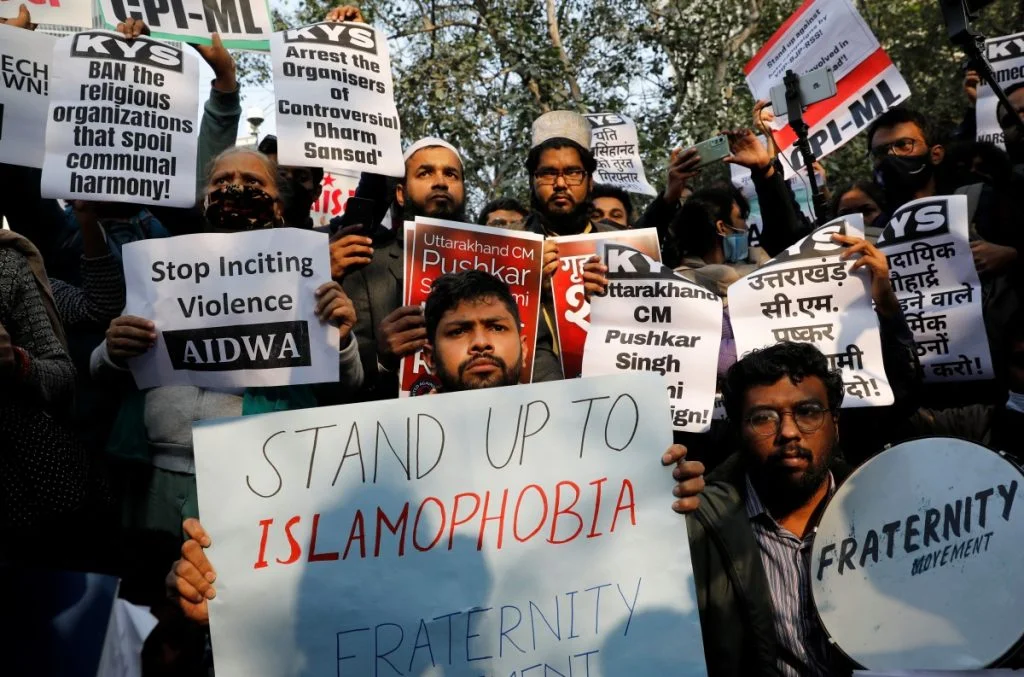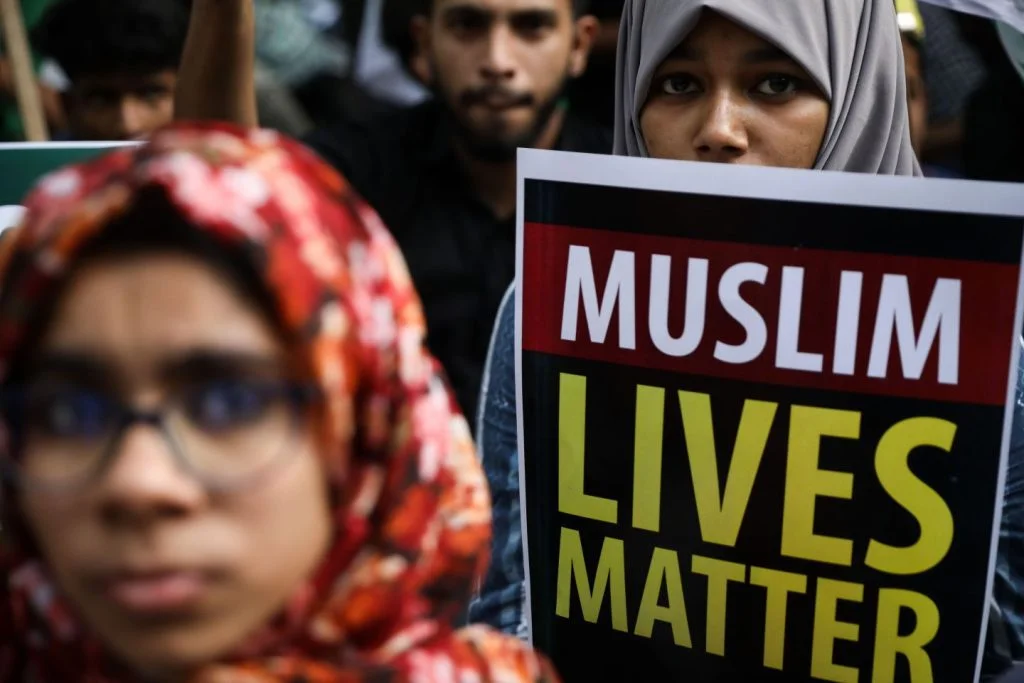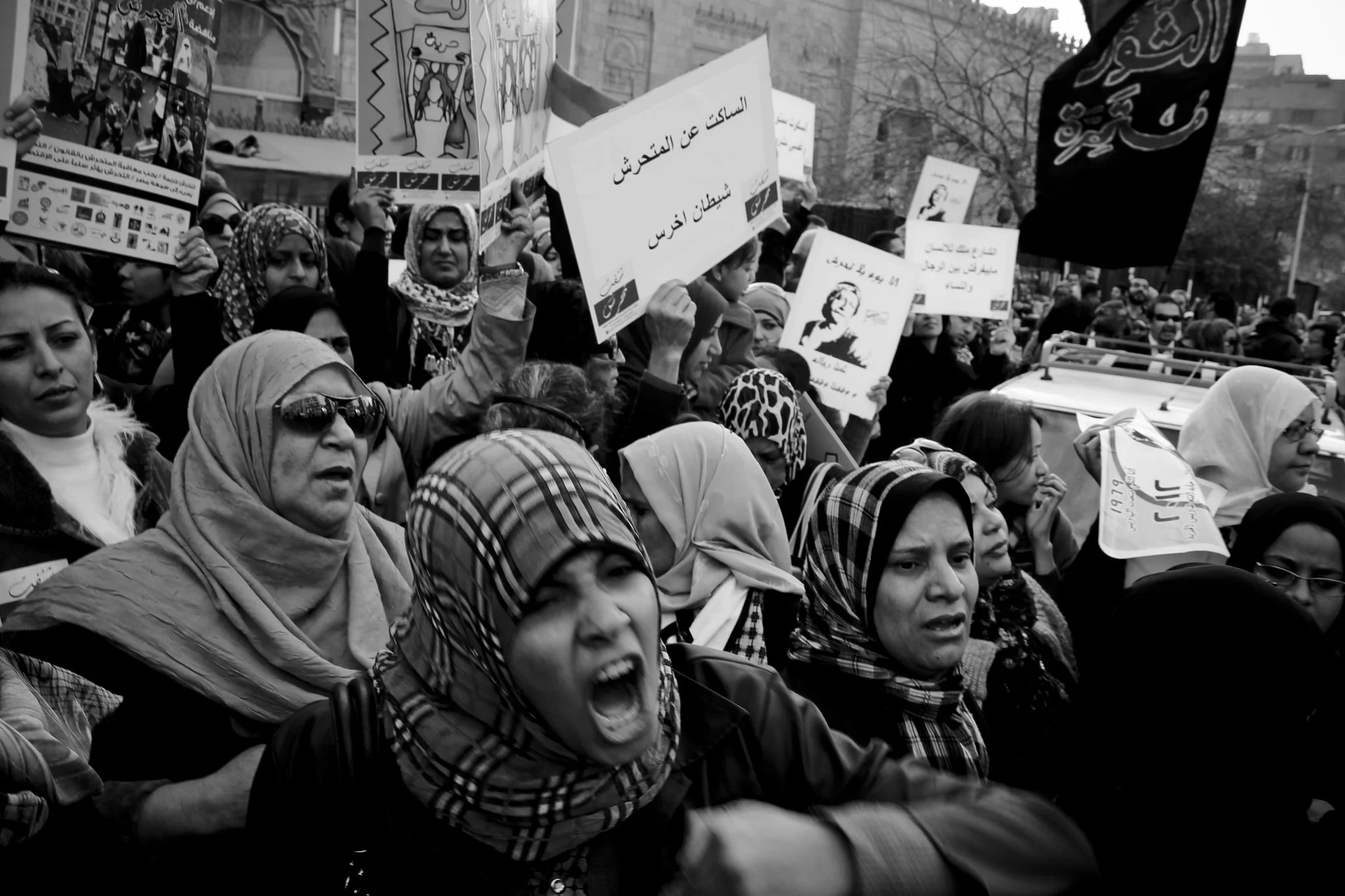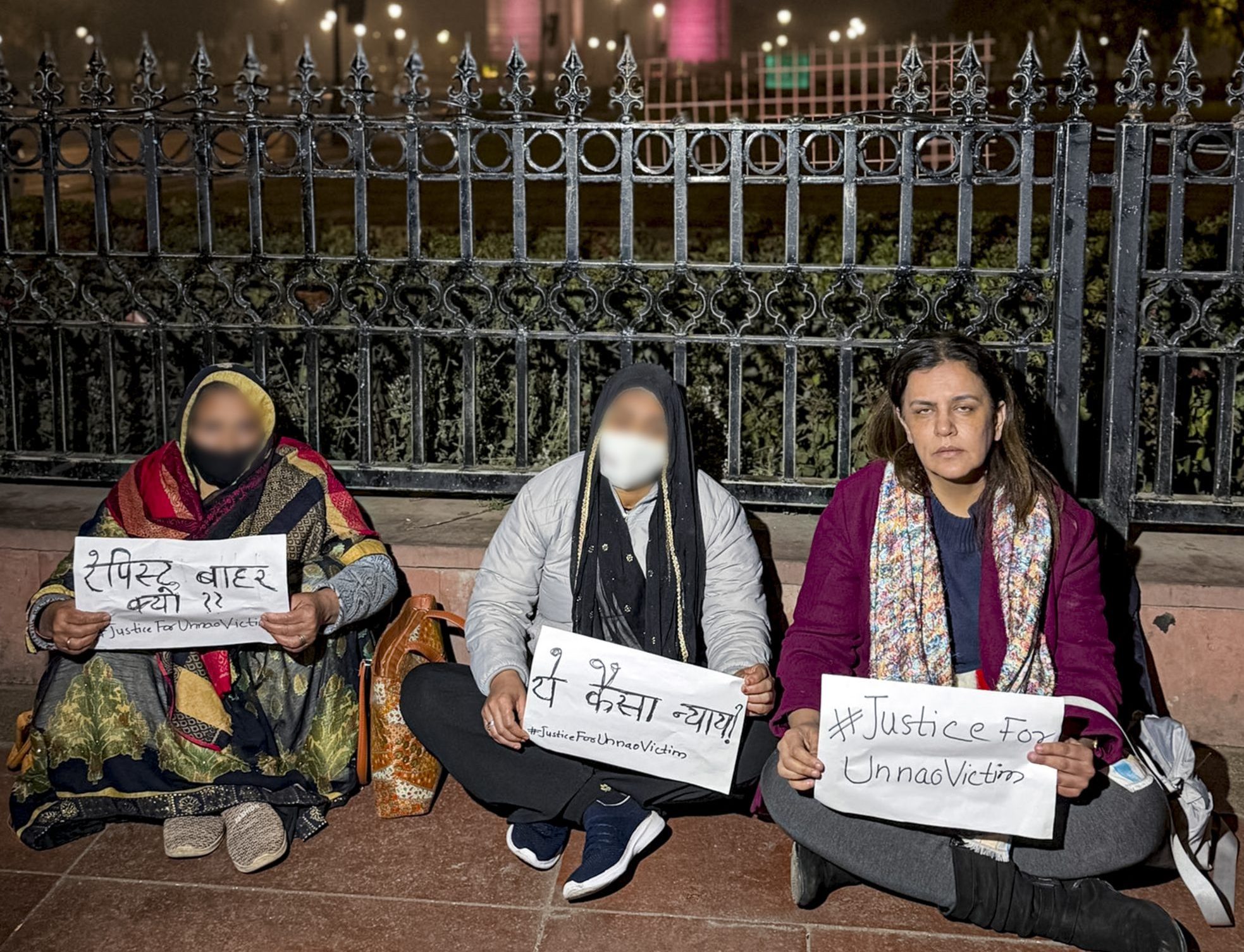Junaid was a 17-year-old Muslim boy coming back from Eid shopping in Delhi when he was attacked by a Hindutva mob along with his brother and cousins on a train, pulling at his skull cap and beard and calling him a ‘beef-eater.’ He was brutally stabbed, killed, and thrown out of the train in Asaoti in Haryana. This happened in June of 2017. All six of the accused got bail within a year of his death.
Junaid was a 17-year-old Muslim boy coming back from Eid shopping in Delhi when he was attacked by a Hindutva mob along with his brother and cousins on a train, pulling at his skull cap and beard and calling him a ‘beef-eater.’
Six years after this, on 4th August 2023, a Railway Protection Officer shot and murdered three Muslims, Abdul Kaderbhai Bhanpurwala, Sadar Mohammed Hussain, and Asghar Abbas Sheikh, along with another Hindu RPF officer, Tikkaram Meena, while they were travelling from Jaipur to Mumbai. The killer had gone through four coaches, asking people’s names and choosing the three Muslims. After the gruesome murder, he asked the other passengers to take a video and said that if they want to live in Hindustan, they should vote for Narendra Modi and Yogi Adityanath.
A year after this, in the same month, on 30th of August, a Muslim man, Haji Ashraf Muniyar, was attacked in a moving train while he was travelling to visit his daughter in Kalyan. He was beaten by a group of men in their 20s, accusing him of carrying ‘cow meat‘. They threatened to throw him out of the train and rape the women in his family. The attackers were arrested and released on bail within 24 hours (which was later cancelled) because of the weaknesses of the sections charged against them.
But the question remains: Why were the weaker, bailable sections of unlawful assembly, rioting, wrongful restraint, voluntarily causing hurt, breach of peace, criminal intimidation, etc, imposed initially instead of other serious offences? Would we have known of this brutal fanaticism if the video had not been released on social media?
The normalisation of everyday violence against Muslims
3 days before the attack of Haji Munyar, on the 27th, a 22-year-old migrant labourer from West Bengal, Sabir Malik, was lynched in Haryana by cow vigilantes. He was killed ‘over suspicions of carrying beef‘. However, this suspicion does not hold any value here. Junaid Khan was not carrying beef, and neither were the three Muslim men who got shot and were chosen from the hundreds of people in a moving train.
All of them were “visibly” Muslim – topi-wearing, long bearded, pious Muslim men. It is ironic how a visibly Hindu man could be the Chief Minister of one of the most powerful states in India, hurl abuses at Muslims, and demolish their homes with bulldozers by calling them ‘criminals, mafias and rioters‘ while Muslims get killed for practising their religion.
A few days later, when a Hindu boy was lynched on the suspicion of carrying beef due to ‘mistaken identity‘, secular consciousness and morality got injected to the Indian society again.
In the same month, in Maharashtra itself, the Hindu “seer” Mahant Ramgiri Maharaj had made derogatory remarks against the Prophet. This resulted in opposition from various Muslim and other social organisations and individuals. A few weeks later, BJP MLA Nitesh Rane, while speaking at a public event, said that if anybody dares to speak against the seer, he would ‘enter mosques to beat up Muslims‘. Maharashtra CM Eknath Shinde himself has come out in support of this man, who has 51 FIRs booked against him, promising that ‘not even a hair‘ of Ramgiri Maharaj would be harmed. However, Eknath Shinde has not reacted to the attack on Haji Munyar, let alone support him.
A few days later, when a Hindu boy was lynched on the suspicion of carrying beef due to ‘mistaken identity‘, secular consciousness and morality got injected to the Indian society again. Mainstream news channels discussed it and gave it prime coverage which would not have been the case if he actually turned out to be Muslim. This selective outrage shows how the violence against Muslims have been normalised and even accepted if not widely propagated.
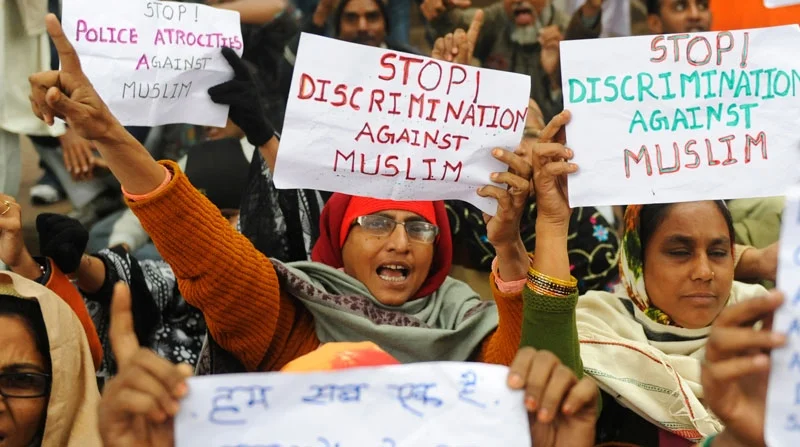
Apart from this, these attacks have instilled a fear of one’s own self for the Muslims – the “visibility” of Muslimness can get you discriminated, abused and killed. The train, as a public space, has now been traumatised for Muslims. Muslim parents often advise their kids not to cover their heads, not to eat non-vegetarian food, not to say salaam while they are on trains, scared that these would reveal their identity.
This is true for majority of public spaces in India. Even if not in the form of a manifested violence like lynching, there is a burden of social discrimination that comes with the assertion of Muslim identity. If you are lucky enough, the discrimination will subside with the glares and verbal harassment and at the other end there is death at the hands of mobs. The morality and conscience of Indians are blind towards the Muslims; they have never received empathy and equality, and now they are not even deserving of sympathy and support. Lynchings of Muslim men and rape of Muslim women would never provoke Indian society to act.
The legal provisions against cow vigilantism
Haryana, the breeding ground of violent cow vigilante groups have seen the most brutal attacks against Muslims on allegations of storing, transporting and consuming beef. In 2015, the Manohar Lal Khattar government had enacted the Haryana Gauvansh Sanrakshan and Gausamvardhan (HGSG) Act that prohibited cow trafficking, slaughtering and possessing or consuming beef. However, the conviction rate under the act seems to be low, highlighting the extra-judicial nature of cow vigilantism. While the government has purposefully kept the provisions under the act vague, the vigilante groups chase Muslims on the roads.
In 2015, the Manohar Lal Khattar government had enacted the Haryana Gauvansh Sanrakshan and Gausamvardhan (HGSG) Act that prohibited cow trafficking, slaughtering and possessing or consuming beef.
This vagueness has repeated in the case of the section on mob-lynching in the Bharatiya Nyay Sanhita too. The inclusion of punitive measures for hate crimes in the newly instated Bharatiya Nyay Sanhita was boasted by the BJP a marker of their secular ideals. However, the provision were manufactured in such a way by providing legal loopholes that would ensure the accused an easy exit.
The section 103(2) of the BNS states: ‘When a group of five or more persons acting in concert commits murder on the ground of race, caste or community, sex, place of birth, language, personal belief or any other [similar] ground each member of such group shall be punished with death or with imprisonment for life or imprisonment for a term which shall not be less than seven years, and shall also be liable to fine.’
By not mentioning the word ‘religion‘, the government has shut the doors on crimes of cow vigilantism, which is rooted in the religion. The usage of the word ‘similar grounds‘ brings confusion and uncertainty therefore bringing the court’s discretion as a final call. This means that the crimes would be dragged in multiple courts in the country draining the complainant.
However, the laws in India are meant to punish the poor rather than protecting them. The first case that was booked in Delhi after the Bharatiya Nyay Sanhita came into force on July 1, 2024 was against a street vendor who sold mangoes in Central Delhi. He was booked for encroaching on government land.
Sacredness of the cow and the formation of the ethno-national state against Muslims
The image of the cow has always been part of India’s ethno-national identity. One of the major reasons for the revolt of 1857 was the use of ‘cow fat‘ in the cartridges given to Hindu soldiers. Then, it was a symbol of resistance and identity against a foreign power, who demeaned their identity and faith. Now it is a weapon of attack against a minority, a symbol of intimidation. It invokes the sense of fear that the image of cross-burning by the Klu Klux Klan did, an omen of something terrible happening.
This Hindutva protectiveness of the cow is ignorant of the fact that India has been maintaining its position as one of the largest beef exporters in the world.
This Hindutva protectiveness of the cow is ignorant of the fact that India has been maintaining its position as one of the largest beef exporters in the world. This figure actually went further higher under the Modi regime, questioning the BJP’s intent of actually “protecting” the cow. Therefore, its clear that it is not just the protection and sacredness of the cow. It is a mere symbol of propagating Hindutva’s ethno-national agenda.
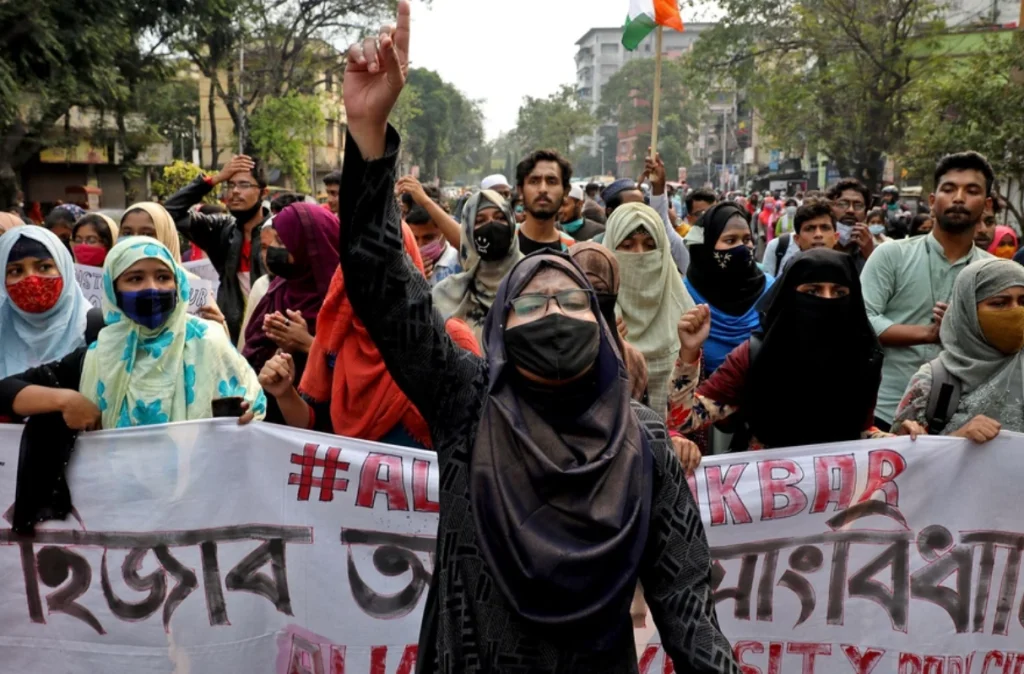
Vegetarianism is a fundamental part of this – therefore, it is accepted to kill Muslims and remove eggs from childrens’ mid-day meal. The irony lies in making money out of selling beef outside while depriving marginalised sections of your country their dietary practices. The image of cow has far moved from its garb of sacredness. It is no more revered and respected, rather feared and maligned.
About the author(s)
Hajara Najeeb is an Independent Researcher working on issues of Minority Rights and Affairs, Gender, and Politics.

